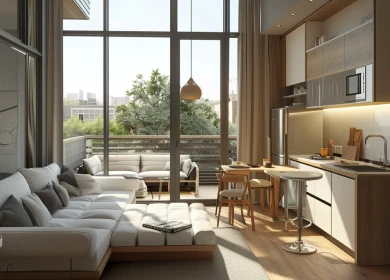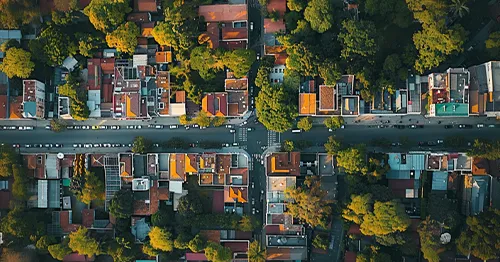Updated: 26 Dec, 2024
The Australian housing market showed resilience in January, continuing its upward trajectory into 2024. In the latest CoreLogic Home Value Index (HVI), national dwelling values increased by 0.4% in January, marking the 12th consecutive month of increases.
While there are variations in performance across different regions, the overall trend indicates sustained growth in the housing market.
Now, let’s delve into the key findings of CoreLogic’s HVI Report for January 2024 and shed light on the current state of the Australian housing market.
How Did The Australian Property Market Perform In January 2024?
Housing market performance in Australia remains diverse, as some cities experienced slight declines while others continued to show substantial growth. Melbourne, Hobart and Canberra experienced a subtle decline in values of 0.1%, 0.7% and 0.2%, respectively. On the other hand, Perth, Adelaide and Brisbane experienced a rise of 1% or more, indicating strong market conditions in these cities.
Perth Shines Among Capital Cities
CoreLogic’s research director, Tim Lawless, identified Perth as a stand-out among the capital cities. “Perth home values rose a further 1.6% in January, on par with the city’s growth trend in November and December and only slightly lower than the recent high of 1.8% recorded in October. The western capital continues to show housing demand outweighing supply, helping to push values 16.7% higher over the past 12 months. Despite that, housing prices remain relatively affordable compared with most capital cities, with the median dwelling value sitting under $677,000.”
Rise In House Values Outpaces Units
House values rose at a faster rate than unit values. The gap between median capital city houses and units rose to a record high of 45.2%.
Across combined capitals, the value of detached housing rose by half a percent, adding $4,800 to the median house value. In contrast, units rose by 0.1%, adding $900 to their value. Lawless added, “Since the commencement of the upswing, capital city house values have surged 11% higher while unit values are up 6.9%. It seems Australians are willing to pay a higher premium than ever for a detached home.”
Regional Markets Showing Stronger Growth
The regional markets of Australia demonstrated a stronger growth trend than the capital cities. The combined regional index rose 1.2% over the rolling quarter, compared with a 1% rise in combined capital cities. However, the pace of growth has slowed down in both combined regional areas and capital cities. The capital city trend experienced a sharper decline due to flattening growth conditions in Melbourne and Sydney. Regional markets in Western Australia, South Australia and Queensland continued to record slower growth than their capital city counterparts.
Tip: Interested in buying in a regional area? Use our postcode calculator to determine if most lenders accept the location.
Increase In Home Sales Volume
Despite worsening housing affordability, the volume of home sales has remained slightly above average over the past three months. CoreLogic estimates that 115,241 dwellings were sold in the three months ending January, representing an 11.9% increase over the same period last year. This suggests that despite economic pressures and affordability constraints, there is still strong demand for housing. Factors such as high migration and tight rental markets are contributing to the buoyancy in the housing market.
Rental Market Gains Momentum
The rental market experienced an upswing. The national rental index shows rental values had their most substantial monthly increase since April 2023, as rents rose 0.8% in January 2024, following a 0.6% rise in December 2023.
Historically, rental growth accelerates in the March quarter, due to increased competition from students and new year leases. Lawless suggests the same pattern will emerge in 2024, as rental growth has picked up in January, signalling a potentially robust rental market in the coming months.
Perth and regional Western Australia led the way in rental growth over the rolling quarter. Perth unit rents experienced a 3.7% rise, which was the nation’s highest increase during the three months ending in January. In contrast, Darwin’s unit rents dropped by 1.6%, while house rents fell by 0.4%.
While the unit sector had previously shown stronger rental growth than house rents during the recent cycle, the trend is shifting. Across the combined capitals, house rents rose by 2.5%, compared with a 1.4% increase in unit rents. This trend was noticeable in every capital city except Perth.





